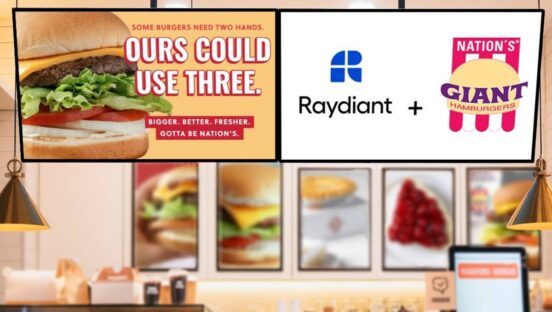Efficiency is top of mind for most restaurant operators. Ordering, food preparation, payroll, inventory all take time and skill to execute in a customer-friendly manner. But as any good operator knows, particularly quick-service operators, driving front-of-house efficiency has to be priority No. 1.
When customers visit a quick-service establishment, they’re counting on a quality experience. While a nearby steakhouse might not be expected to serve a meal on a dime, quick-serve customers expect their food in minutes, every single time. Technology plays a significant role in making sure quick-service operators and their teams meet these expectations.
Moreover, many operators today understand the need to get ahead of technology. Take mobile ordering as an example. While mobile ordering is a relatively nascent offering, some restaurants such as Papa John’s and Domino’s are already recording more than half of their sales through digital channels. That said, technology adoption doesn’t automatically equal efficiency. For those operators looking to take efficiency to the next level, here are several under-utilized tactics to further improve the customer experience.
Turn up transaction efficiency
One way to increase front-of-house efficiency is to focus on customer transactions. Just two years ago, this was a focal point for the industry as EMV was predicted to pose a challenge for retailers’ transaction times. The move to EMV left most operators largely unscathed, but there are still tweaks operators can make for faster transaction times.
For example, enabling a cash-rounding feature can shave valuable seconds off of cash transactions. Some point-of-sale technologies allow you to enable this functionality, meaning transaction totals can be rounded to the nearest five, 10 or 25-cent mark at the discretion of the operator. This eliminates extra time spent counting pennies and other change.
Operators also can experiment with other functionalities, such as tax-inclusive pricing. On the front end, this makes pricing simpler and more intuitive for customers, while also simplifying ordering for staff. This feature can prove particularly useful in helping alleviate strain during high-traffic periods.
Let performance data work for you
And then there’s the individual working the register. Occasionally, operators will cast off personnel issues as solely a management responsibility. However, successful operators need to empower managers with the necessary tools and information needed to maximize employee performance.
Operators should encourage managers to solicit feedback from employees and openly share their own. With this information, operators and managers should meet monthly (if not more frequently) to discuss trends in employee behavior, areas for improvement and each parties’ role in delivering on that improvement.
Perhaps the most important component, and often the most overlooked, is marrying these conversations to employee performance data. Now, operators can tap into a wealth of employee data, often available directly from the point of sale.
Operators can use these records, which often offer to-the-minute performance updates, to create a holistic picture of their restaurant’s workforce. This can provide both an overarching workforce picture and an individual level snapshot, allowing operators to further grow strong performers and hone in on helping those falling off the pace.
Move ordering beyond restaurant walls
Finally, operators can look outside their physical footprint to expedite operations inside of it. Specifically, there’s a pressing need to explore mobile capabilities. Business Insider expects mobile ordering for quick-service restaurants to tally $38 billion by the year 2020. Mobile is the future, and operators must decide how they will embrace it.
One Atlanta-based quick-serve has seen major mobile success. While the brand remains adept at creating raving fans, even loyal fans will tell you that peak-times can lead to long lines. Yet the company introduced mobile ordering in 2016 and has quickly reaped the benefits. Immediately, restaurants garner an efficiency boost as each time a mobile order is placed, that’s one less order placed at a counter, occupying an employee’s time.
And for operators looking to take service up a notch, they can implement curbside delivery for mobile orders, a trend even McDonald’s plans to join. In this scenario, you help reduce in-store traffic and create a better customer experience. And for any operators worrying reducing in-store traffic will impact revenue, various reports show mobile orders have higher ticket values than in-store orders.
However, the true value of these suggestions lies in the opportunity to drive increased efficiency. From quickening the transaction to taking that transaction to a customer’s mobile device, efficiency is the lifeblood of any quick-serve. And ultimately, it’s what helps ensure consistent cash flow and a satisfied customer to boot.












